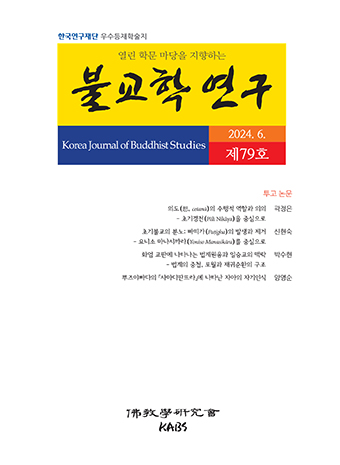Abstract
References
Sorry, not available.
Click the PDF button.
Information
Nirodhasamāpatti has been regarded as the highest in the Buddhist meditative practice known as the nine successive mental abodes(navānupūrvavihāra) consisting of the four ecstasies(dhyāna) of the world of subtle form, the four attainments(samāpatti) of the formless world and the attainment of the cessation of conceptualisation and feeling(saṃjñāvedayitanirodha). Despite its clear difference in definition, it sometimes equated with nirvāṇa which is the highest goal of all Buddhists. In fact it even regarded as a temporal experience of nirvāṇa without a remainder of clinging(nirupadhiśeṣanirvāṇa).In this paper I am dealing with this problematic equation of nirodhasamāpatti with nirvāṇa by analysing the origin of this equation seen in the Theravāda exegetical tradition, by examining saṃjñāvedayitanirodha and nirodhasamāpatti from the doctrinal and historical perspectives and by inspect its status within nine successive mental abodes(navānupūrvavihāra) and show the reason why it had to be equated with nirvāṇa without a remainder of clinging(nirupadhiśeṣanirvāṇa). Although nirodhasamāpatti is sometimes attributed to the Buddha himself, it has neither obvious connection with mainstream Buddhist soteriology nor has some of the original Buddhist meditative techniques. As investigated by Johanees Bronkhorst in his the Two Traditions of Meditation in Ancient India, it has on the contrary some of the non Buddhist meditative skills. In his terminology, these skills belong to the mainstream meditation tradition which was later systematised in Jainism and Yoga tradition. Thus, regarding nirodhasamāpatti as the highest seems to be under the influence of such mainstream meditation tradition into Buddhist meditation. In my opinion, equating nirodhasamāpatti with nirvāṇa seems to be one of the ways to settle down this foreign influence into the Buddhist meditative techniques. In fact, regarding it as the temporal experience of nirvāṇa without a remainder of clinging(nirupadhiśe ṣanirvāṇa) could be a step further into the mainstream meditation tradition. One of the reaction against this kind of tendencies could be the well-known dispute over whether there still is the series of the mind within nirodhasamāpatti or there no longer is mental activities within this cessation.
Click the PDF button.
- Publisher :Korean Association of Buddhist Studies
- Publisher(Ko) :불교학연구회
- Journal Title :Korea Journal of Buddhist Studies
- Journal Title(Ko) :불교학연구
- Volume : 11
- No :0
- Pages :346~364


 Korea Journal of Buddhist Studies
Korea Journal of Buddhist Studies






